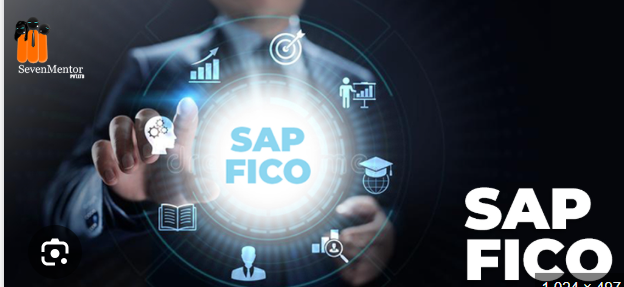Sap Fico Classes in Pune SAP FICO (Financial Accounting and Controlling) works as an integrated system within the broader SAP ERP platform, designed to manage an organization’s financial data and internal cost control processes. The system is divided into two main areas: Financial Accounting (FI) and Controlling (CO). Both work together to provide comprehensive financial reporting, analysis, and decision-making.
How SAP FICO Works:
1. Financial Accounting (FI)
The FI module is focused on tracking financial transactions and generating reports for external purposes, such as regulatory compliance, taxes, and financial statements.
General Ledger (GL): The GL is the main accounting record where all financial transactions (sales, expenses, assets, etc.) are posted. The GL ensures that the company’s financials are accurate and up-to-date.
Each transaction in SAP (e.g., vendor invoice, customer payment) is recorded in the GL with a unique transaction code.
Accounts Payable (AP): Manages amounts owed to vendors and suppliers. It records transactions like invoices and payments, ensuring the company meets its financial obligations.
Accounts Receivable (AR): Manages amounts owed by customers. It tracks invoices, payments, and overdue accounts, ensuring that incoming funds are received and recorded correctly.
Asset Accounting (AA): Tracks company assets like machinery, buildings, or vehicles. It ensures assets are properly managed, depreciated, and reported.
Bank Accounting (BA): Manages the company’s cash flow and bank transactions, including payments and transfers.
2. Controlling (CO)
The CO module is focused on internal cost management and performance analysis. It helps companies control their expenses and optimize resource usage, supporting decision-making and internal reporting.
Cost Center Accounting (CCA): Tracks costs by department or location. For example, costs incurred in the marketing department or the IT department would be posted to their respective cost centers. This helps organizations manage their operational costs.
Profit Center Accounting (PCA): Monitors profitability by business segment, such as product lines, regions, or sales channels. It helps determine which areas of the business are more profitable and which may need attention.
Internal Orders (IO): Tracks costs for specific projects or activities within the company, such as an internal marketing campaign or product development. These costs are collected and allocated to specific orders for analysis.
Product Costing (PC): Calculates and tracks the cost of producing goods or services. It includes direct costs like materials and labor, as well as overhead costs, helping companies determine product pricing and profitability. Sap Fico Course in Pune
Profitability Analysis (PA): Provides detailed analysis on profit by market segment, region, or product line. This helps the company understand which areas are generating the most profit and which are underperforming.
How They Work Together:
Integration Between FI and CO:
The key to SAP FICO’s functionality is the integration between the Financial Accounting (FI) and Controlling (CO) modules. For instance:
When an organization records a financial transaction (e.g., a purchase order), the system will post the transaction both to the General Ledger (FI) and a Cost Center (CO) to track the associated costs.
In this way, FI handles external financial reporting, while CO manages internal cost control.
Data Flow:
Financial transactions entered into SAP (such as sales or purchases) automatically update both the FI and CO modules.
These transactions can include direct costs (like materials) or indirect costs (like overhead), and are tracked through various cost objects, such as cost centers or internal orders.
Reports generated from FI (like balance sheets or profit and loss statements) pull information from the underlying transactional data. Meanwhile, CO helps produce reports focused on internal performance, such as cost analysis or profitability reports.
Real-Time Data Processing:
SAP FICO operates in real time, meaning that once a financial transaction is entered into the system, all related accounting entries and cost tracking are updated immediately. This enables accurate and timely reporting.
Example Workflow in SAP FICO:
Transaction Entry: A company buys raw materials from a vendor (FI module). This generates an invoice, which is entered into the SAP system.
Payment Processing: The accounts payable department processes the payment to the vendor, updating the Accounts Payable (FI) module and the Bank Accounting (FI) module.
Sap Fico Training in Pune
Cost Allocation: The purchase cost is allocated to a specific cost center (e.g., production costs, which are managed through Cost Center Accounting (CO)).
Profitability Analysis: The company reviews the performance of the production department and determines that the cost of raw materials is affecting profitability. The Profitability Analysis (PA) and Cost Center (CO) reports highlight these costs, allowing management to make decisions.
0
0
0
Rate this business
Have you heard of this business? Do you like it? How do you like it?
Check out if it is in the list of Top Rated Small Businesses
